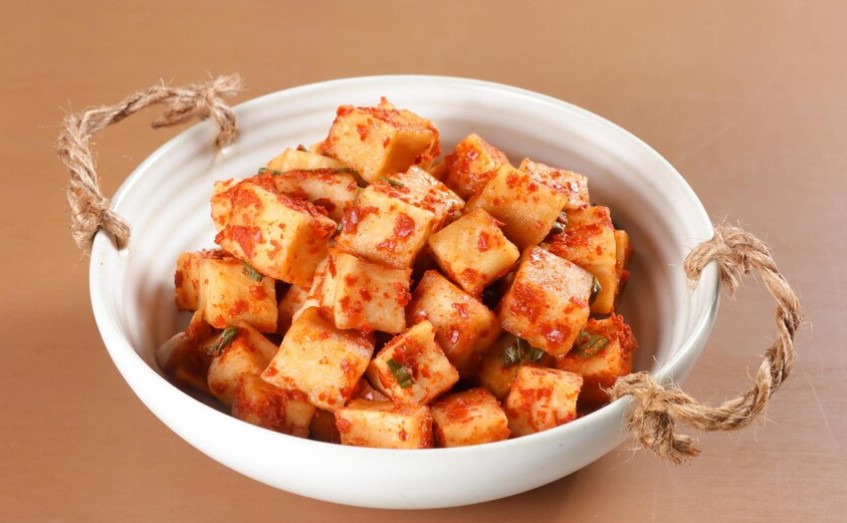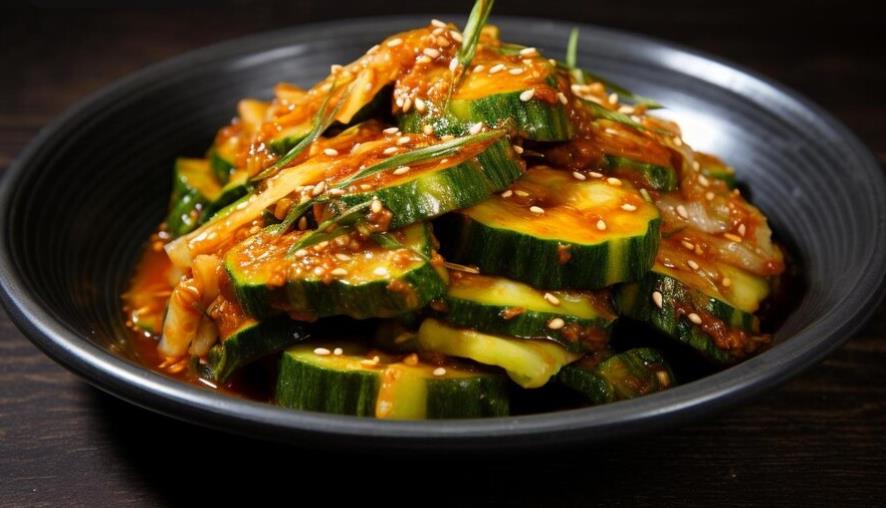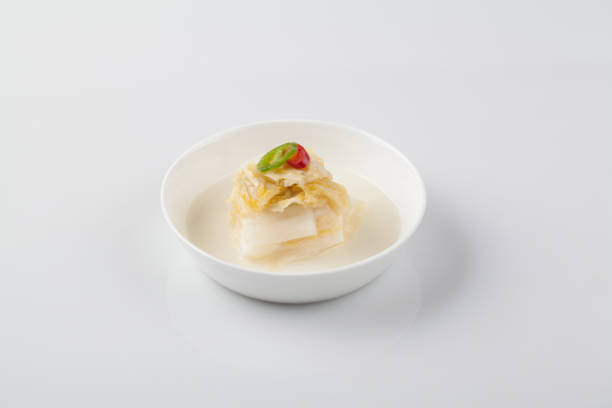Kimchi is not just a dish; it’s a vibrant expression of culture, tradition, and health. Often seen as a simple side dish of spicy fermented cabbage, kimchi is much more diverse than most people realize. In fact, there are over 100 varieties of kimchi, each offering distinct flavors, textures, and health benefits. From regional specialties to innovative modern versions, kimchi’s versatility makes it a food that can appeal to a wide range of palates.
As kimchi’s global popularity rises, Dubai has embraced this Korean classic, not just as a flavorful addition to meals but also as a symbol of wellness and probiotic health. Let’s explore some of the most popular types of kimchi and how each one offers a unique experience for your taste buds—and your gut.
Baechu Kimchi: The Classic Everyone Loves
When people think of kimchi, they’re most likely thinking of Baechu kimchi, the classic fermented napa cabbage variety. This traditional kimchi is made by salting napa cabbage, then coating it in a rich paste made from gochugaru (Korean red pepper flakes), garlic, ginger, and fish sauce.
Baechu kimchi is the cornerstone of Korean cuisine because it’s packed with probiotics and delivers a burst of umami, spice, and tang. The gochugaru gives it a fruity, mild heat that develops complexity during the fermentation process. The fish sauce provides depth, aiding in fermentation by introducing enzymes that foster the growth of beneficial bacteria, which transform the cabbage into a probiotic powerhouse.
This is the kimchi you’ll find in most Korean households and restaurants. It’s bold, spicy, and brimming with flavor. But don’t let its fiery reputation intimidate you—Baechu kimchi is beloved for its balance of heat and savory notes, making it a versatile side that pairs well with just about anything, from rice to grilled meats. The probiotics in Baechu kimchi aren’t just good for your digestion; they also help boost immunity and reduce inflammation.
Kkakdugi: Crunch Meets Flavor
For those who want something with more crunch, Kkakdugi is the go-to. Made from Korean radish (daikon), Kkakdugi provides a firmer, more textured bite compared to its cabbage counterpart. The radish’s natural sweetness marries beautifully with the spicy gochugaru paste, creating a delightful mix of sweet, spicy, and tangy flavors.

Because of its crunchy texture, Kkakdugi is particularly satisfying when eaten with softer dishes like rice or soups. It offers a different fermentation experience: slightly less pungent but with a more pronounced sweetness that mellows out the spice.
Kkakdugi is also rich in fiber, which not only aids digestion but helps regulate blood sugar and supports heart health. It’s the perfect choice for those looking for a kimchi that delivers both crunch and health benefits.
Oi Sobagi: The Refreshing Kimchi
When summer hits or you’re craving something light and refreshing, Oi Sobagi—or cucumber kimchi—is the answer. This variety is less pungent than its cabbage or radish counterparts, offering a refreshing, crisp flavor that’s perfect for hot climates like Dubai’s. Oi Sobagi is made by stuffing cucumbers with a gochugaru-based paste, resulting in a crunchy, tangy bite that’s bursting with flavor yet light on the palate.

Cucumber kimchi doesn’t require long fermentation periods, making it an excellent option if you prefer a milder, fresher taste. The crispness of the cucumber, combined with the mildly spicy kick from the gochugaru, creates a delightful balance that pairs well with grilled meats, fish, or even as a palate cleanser between rich dishes. Oi Sobagi is ideal for those who want a taste of kimchi without the heavy fermentation notes of Baechu or Kkakdugi.
Baek Kimchi: A Milder, Non-Spicy Option
Not a fan of spicy food? Baek Kimchi, also known as white kimchi, skips the gochugaru altogether, making it a non-spicy alternative. Instead of spice, Baek Kimchi focuses on showcasing the natural flavors of the vegetables, often enhanced with ingredients like apple, pear, or pine nuts to add sweetness and crunch. The absence of heat allows the delicate sweetness of napa cabbage to shine, creating a gentler flavor profile that’s still rich in probiotics and nutrients.

This kimchi is perfect for children or those who want to enjoy the benefits of fermented foods without the fiery kick. The fermentation process still delivers that signature tang, but without the intense spice, making Baek Kimchi a versatile addition to any meal.
Modern Varieties: Vegan and Fusion Kimchi
As global tastes evolve, so does kimchi. Vegan kimchi is now widely available, replacing traditional fish sauce with plant-based alternatives like soy sauce or miso. This version maintains the depth of flavor without using any animal products, making it accessible to a broader audience.
Beyond veganism, chefs and food enthusiasts have begun experimenting with fusion kimchi, adding ingredients like kale, beetroot, and even fruits like pineapple. These modern twists keep the essence of fermentation intact while offering new, exciting flavor combinations. Fusion kimchi is a testament to kimchi’s adaptability, proving that while the process may be traditional, the possibilities are endless.
How Fermentation and Time Impact Kimchi’s Flavor

The true magic of kimchi happens during fermentation. As the cabbage (or radish, cucumber, or other vegetables) ferments, lactic acid bacteria develop, which gives kimchi its tangy flavor. The longer the fermentation process, the more intense the flavor becomes.
- Short fermentation (1-2 days): This produces a fresh, crisp kimchi with a mild tang.
- Medium fermentation (3-5 days): The flavors deepen, becoming more complex and tangy.
- Long fermentation (1-2 weeks or more): The kimchi develops a strong, sour taste, with deep, robust flavors that are perfect for cooking in stews and soups.
Fermentation is not just about developing flavor, though—it’s also the process that makes kimchi so beneficial for your health. The bacteria involved in fermentation transform the natural sugars in vegetables into probiotics, which support gut health, enhance digestion, and boost immunity.
Brining Techniques: The Foundation of Great Kimchi
Before the fermentation can even begin, the cabbage (or other vegetables) must be brined properly. There are two main brining methods: dry salting and wet brining.
- Dry salting involves sprinkling salt directly onto the cabbage leaves, which draws out moisture and prepares the vegetable for fermentation. This method creates a firmer, crunchier texture.
- Wet brining submerges the cabbage in a salted water solution for several hours. This results in a softer texture, which is perfect for those who prefer their kimchi a little more tender.
The method you choose depends on your preference, but both are essential in preparing the vegetables for the fermentation process that follows.
Tabchilli’s Approach: Classic Kimchi, Crafted with Tradition
At Tabchilli, we take pride in producing classic kimchi that stays true to traditional fermentation techniques while delivering rich, authentic flavors. Our kimchi is crafted with the finest ingredients, ensuring that each jar is packed with natural probiotics and nutrients.
Whether you’re looking for that fiery kick from Baechu kimchi, the crunch of Kkakdugi, or the refreshing bite of Oi Sobagi, Tabchilli has something for everyone. We leverage time-honored methods to create kimchi that not only tastes amazing but also promotes gut health and overall wellness.
Want to learn how to make your own kimchi? Join one of our fermentation workshops in Dubai, where we’ll teach you the art of making kimchi from scratch. Or, if you prefer, pick up a jar of our handcrafted kimchi and enjoy the flavors of traditional Korean fermentation at home.
1% of each order supports children with juvenile arthritis.